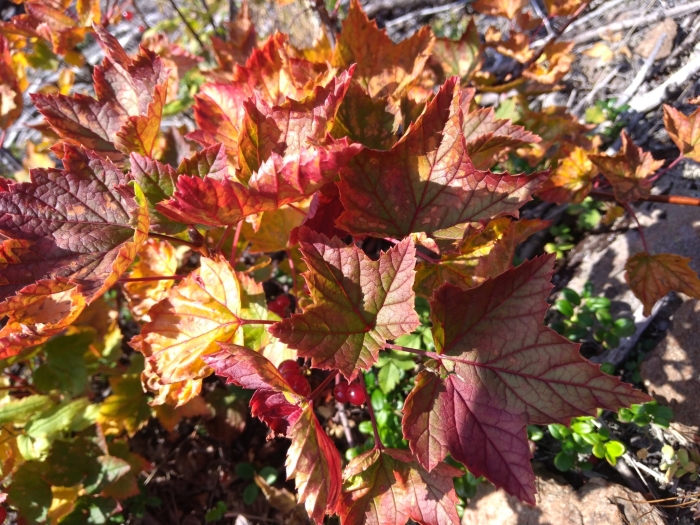Northern Redcurrant
(Ribes triste)
Northern Redcurrant (Ribes triste)
/
/

Лия
CC BY 4.0
Image By:
Лия
Recorded By:
Copyright:
CC BY 4.0
Copyright Notice:
Photo by: Лия | License Type: CC BY 4.0 | License URL: http://creativecommons.org/licenses/by/4.0/ | Rights Holder: Лия | Publisher: iNaturalist | Date Created: 2019-09-01T11:30:40-07:00 |

























Estimated Native Range
Summary
Ribes triste, commonly known as Northern Redcurrant or Swamp Redcurrant, is a deciduous shrub native to cool, moist forest understories, stream banks, and wetlands in Canada, the northern United States, and eastern Asia. It typically grows up to 20 inches tall with a similar spread, featuring creeping branches and alternate, palmately lobed leaves that are soft and hairy beneath. The plant produces pendulous racemes of small, bell-shaped, purplish flowers in June and July, which are modest in appearance but attract pollinators. These are followed by bright red, edible but tart berries that can be used in culinary applications.
Northern Redcurrant is valued for its wildlife-friendly attributes, as the berries provide food for birds and small mammals. It is used in native plant gardens, as a low-growing shrub in moist areas, and for streambank stabilization due to its spreading habit. This shrub prefers partial shade to full sun, consistently moist soil, and cool conditions. It is relatively low-maintenance but may require additional water during dry periods. While not widely available in the nursery trade, it can be propagated from cuttings or seeds. Gardeners should be aware that it is susceptible to white pine blister rust, a disease that also affects pine trees, and should not be planted near susceptible pines.CC BY-SA 4.0
Northern Redcurrant is valued for its wildlife-friendly attributes, as the berries provide food for birds and small mammals. It is used in native plant gardens, as a low-growing shrub in moist areas, and for streambank stabilization due to its spreading habit. This shrub prefers partial shade to full sun, consistently moist soil, and cool conditions. It is relatively low-maintenance but may require additional water during dry periods. While not widely available in the nursery trade, it can be propagated from cuttings or seeds. Gardeners should be aware that it is susceptible to white pine blister rust, a disease that also affects pine trees, and should not be planted near susceptible pines.CC BY-SA 4.0
Plant Description
- Plant Type: Shrub
- Height: 2-3 feet
- Width: 2-3 feet
- Growth Rate: Moderate
- Flower Color: Red
- Flowering Season: Spring, Summer
- Leaf Retention: Deciduous
Growth Requirements
- Sun: Full Sun, Part Shade
- Water: Medium
- Drainage: Fast, Medium
Common Uses
Bird Garden, Butterfly Garden, Low Maintenance, Water Garden
Natural Habitat
Cool, moist forest understories, stream banks, and wetlands
Other Names
Common Names: Swamp Red Currant, Northern Red Currant, Wild Red Currant, 눈까치밥나무, American Red Currant
Scientific Names: , Ribes triste, Coreosma tristis, Ribes albinervium, Ribes altaicum, Ribes altaicum, Ribes ciliosum, Ribes melancholicum, Ribes melancholicum, Ribes migratorium
GBIF Accepted Name: